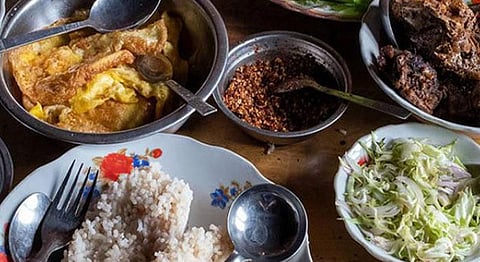
- HOMEGROWN WORLD
- #HGCREATORS
- #HGEXPLORE
- #HGVOICES
- #HGSHOP
- CAREERS
- ABOUT US
- CONTACT US

Delhi is a city built by refugees. Several parts of the present-day city have emerged out of erstwhile Partition refugee camps that are quintessentially ‘Delhi’ today. The western ends of the city we recognise as West Patel Nagar, Moti Nagar and Rajouri Gardens today, came into being only after 1947 as settlements for displaced Hindus and Sikhs migrating from Pakistan. The affluent Bengali neighbourhood of Chittaranjan Park was once called East Pakistan Displaced Persons Colony, and was built in the 1960s to accommodate Bengali refugees from East Pakistan, present-day Bangladesh. Seven decades after the partition, the narratives of refugees continues to shape the modern history of the city.
India is home to at least 24,000 refugees – mainly Afghans, Somalis, Syrians, and Burmese – registered with the UNHCR, and Delhi has made room for at least 50 percent of them. Other than that, about 8,000 Tibetan refugees also reside in the capital. Since India has not signed the 1951 United Nations Refugee Convention, the status of refugees in the country is not very clear. Registered refugees have a blue card from the UNHCR, which prevents their deportation but does not allow them to earn a livelihood through the formal sector or own bank accounts. Most refugees try to make ends meet through small-time jobs, provided Indian employers are willing to give them work. For these refugees, the memories of home are kept alive through food, if they are lucky, and a shared language with companions in the same situation.
The African community in Delhi forms a pan-African diaspora, with individuals and families emigrating from countries like Ethiopia, Somalia and Nigeria alike. The reasons for Africans to migrate to India are diverse – while some come looking for affordable medical treatment several, especially Somalis, are refugees trying to escape strife in their home country. Khirki Village, Hauz Rani and Wazirabad are pockets in the city Somalis gravitate towards to seek familiar spaces. Walking through Khirki Village, one can find a plethora of Afghani restaurants open for business but few establishments may openly declare themselves ‘Somali’. To be African in India is harder than being from any other immigrant community. While Afghans can still hope to blend in here, Africans face constant discrimination and are often seen as a homogenous whole, despite being from entirely different countries and cultures.
There are a few non-descript pop-ups in Khirki Village and Hauz Rani which serve Somali food but are usually unnamed and can only be found by other Somalis who frequent these hole-in-the-wall eateries. Interestingly, pasta or baasto is a common dish in Somali cuisine and is served with a meat curry. The Somali spaghetti is of Italian influence, from colonial occupation in the 19th and 20th century. The country also served as a popular port for spices from India, which have also been incorporated in its cuisine. Its colonial and mercantile influences has brought the sambusa or samosa to Somalia. Dishes like suqaar (sautéed meat), anjero (sourdough pancakes) and kac-kac (doughnuts/cookies) are often served at these eateries along with extra sweet Somali tea.
Since local Indians often look at these establishments, along with their patrons and managers, with suspicion, they are not as permanent as their Afghan counterparts and tend to be an open secret only among the Somalis living around the area.
The Somali Civil War started in 1991, after Dictator Siad Barre was overthrown. The country has experienced constant conflict since then. The two-decade-old conflict has displaced close to two million Somalis, according to UNHCR.
If you liked this article we suggest you read:
